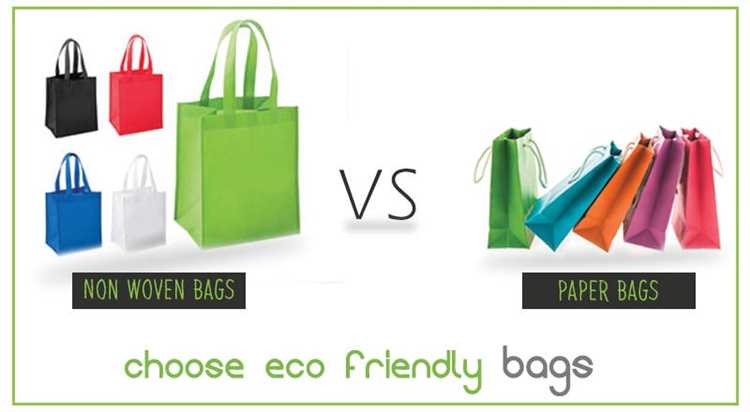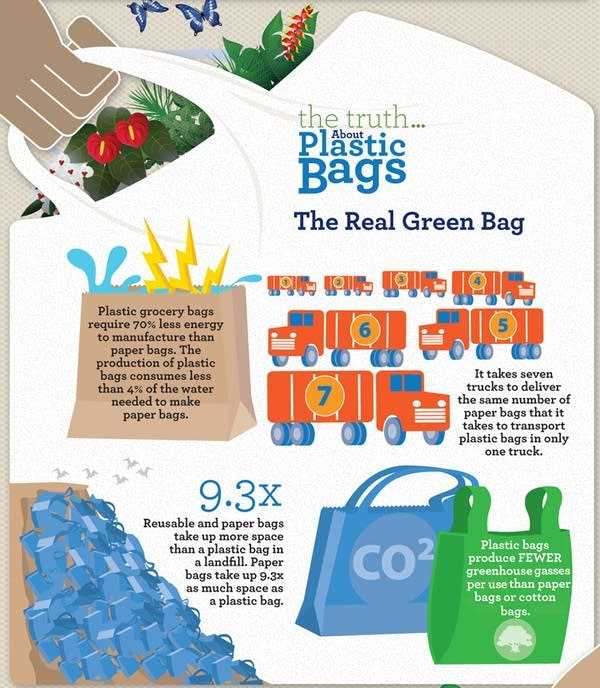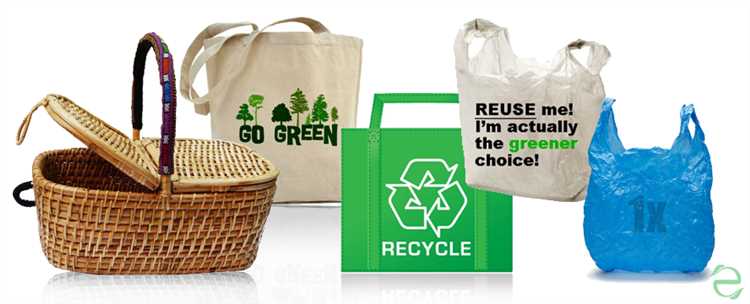
With the increasing awareness about the environmental impact of single-use plastic bags, more and more people are turning to environmentally friendly alternatives. But with so many options available, how do you choose the right bag for you?
Reusable canvas bags have become a popular choice for those looking to reduce their environmental footprint. Made from natural fibers, these bags are durable and can withstand heavy loads, making them ideal for grocery shopping or carrying books. Their sturdy construction means they can be used again and again, reducing the need for single-use bags.
Biodegradable plastic bags are another option to consider. These bags are made from plant-based materials, such as cornstarch, which allows them to break down naturally over time. While they do still produce some greenhouse gas emissions during the manufacturing process, they are a step in the right direction towards reducing plastic waste.
Paper bags are a classic choice that many people gravitate towards. Made from renewable resources, they can be easily recycled or composted, making them an eco-friendly option. However, it’s important to note that paper bags have a lower load capacity compared to other options and may not be as durable.
Upcycled bags offer a unique and creative way to reduce waste. These bags are made from materials that would otherwise end up in a landfill, such as old denim jeans or vinyl banners. Upcycling not only reduces waste but also gives new life to materials that would otherwise go to waste.
When choosing an environmentally friendly bag, it’s important to consider your own needs and lifestyle. Whether you opt for a reusable canvas bag, a biodegradable plastic bag, a paper bag, or an upcycled bag, every small step towards reducing plastic waste can make a big difference for our planet.
- Importance of Eco-Friendly Bags
- Plastic Bags: Harmful to the Environment
- Paper Bags: A Renewable Option?
- Reusable Cloth Bags: Durability and Sustainability
- Biodegradable Bags: A Solution?
- Q&A
- What are some environmentally friendly bag options?
- How are reusable cloth bags better for the environment?
- Are paper bags a good alternative to plastic bags?
- What are biodegradable plastic bags?
- Are there any downsides to using biodegradable plastic bags?
Importance of Eco-Friendly Bags

Using eco-friendly bags is an important step in reducing our impact on the environment. Traditional plastic bags are notorious for their harmful effects on the planet. They are made from non-renewable resources like oil, and they take hundreds of years to decompose. This means that plastic bags contribute to pollution and waste, as they end up in landfills or as litter in our oceans and natural habitats.
Eco-friendly bags, on the other hand, are made from sustainable materials such as organic cotton, jute, hemp, or recycled materials. These bags are biodegradable and do not release harmful toxins into the environment. By choosing eco-friendly bags, we can help reduce the demand for plastic bags and decrease the amount of waste that ends up in our ecosystems.
In addition to their positive environmental impact, eco-friendly bags also have practical benefits. They are often sturdier and more durable than plastic bags, meaning they can be reused many times over. This saves resources and reduces the need for constant bag production. Many eco-friendly bags also have larger carrying capacities, allowing us to carry more items with less waste.
Furthermore, using eco-friendly bags can promote sustainable practices and raise awareness about the importance of reducing our plastic consumption. By choosing to use these bags, we can inspire others to make more eco-conscious choices in their everyday lives.
In conclusion, the importance of using eco-friendly bags cannot be understated. By opting for sustainable alternatives to plastic bags, we can make a positive impact on the environment, reduce waste, and promote a more sustainable future for generations to come.
Plastic Bags: Harmful to the Environment
Plastic bags are widely used due to their convenience and affordability, but they pose a significant threat to the environment. These lightweight bags are made from non-renewable resources such as crude oil, gas, and coal. The production of plastic bags contributes to the depletion of these resources and worsens the environmental impact of extracting them.
One of the main issues with plastic bags is their durability and resistance to decomposition. While it may seem convenient to dispose of them after a single use, plastic bags can persist in the environment for hundreds of years. As they break down into smaller pieces, known as microplastics, they can be ingested by marine life and enter the food chain, causing harm to ecosystems and wildlife.
Plastic bags also contribute to pollution during their production and disposal. The manufacturing process releases greenhouse gases and toxic chemicals into the atmosphere, contributing to climate change and air pollution. When improperly disposed of, plastic bags can end up in landfills or find their way into rivers, oceans, and other natural habitats, polluting water sources and harming aquatic life.
The overuse of plastic bags has become a global problem. According to estimates, around 1 trillion plastic bags are used worldwide each year, and less than 5% of them are recycled. This staggering statistic highlights the urgent need to reduce our dependence on plastic bags and find more environmentally friendly alternatives.
To combat the harmful effects of plastic bags, many countries and cities have implemented bans or taxes on single-use plastic bags. Some individuals have also made a conscious effort to switch to reusable bags made from natural materials like cotton, canvas, or jute. These eco-friendly alternatives are not only sturdier and more durable than plastic bags but also biodegradable, reducing their impact on the environment.
In conclusion, plastic bags are a major environmental concern due to their negative impact on ecosystems, wildlife, and climate change. By choosing more sustainable alternatives and reducing our consumption of plastic bags, we can protect the environment and ensure a greener future for generations to come.
Paper Bags: A Renewable Option?

Paper bags have long been touted as a more environmentally friendly alternative to plastic bags. They are often seen as a renewable option due to the fact that they are made from trees, which can be replanted.
However, the environmental impact of paper bags is not as straightforward as it may seem. While it is true that paper bags can be recycled and are biodegradable, the production process for paper bags is energy-intensive and requires a significant amount of water. In addition, the demand for paper bags has contributed to deforestation in some regions.
It is also important to consider the carbon footprint of paper bags. The production and transportation of paper bags release greenhouse gases, contributing to climate change. In fact, a study by the UK Environment Agency found that paper bags need to be reused at least three times to have a lower carbon footprint than plastic bags.
Furthermore, paper bags are not as durable as some other bag options. They can tear easily and are not suitable for carrying heavy or wet items. This means that consumers may need to use multiple paper bags to carry their groceries, resulting in even more waste.
Despite these concerns, paper bags can still be a better option than plastic bags in certain situations. They are generally easier to recycle and are less harmful to marine life. Additionally, the use of paper bags can help support the paper recycling industry and encourage the development of more sustainable practices.
Ultimately, the choice between paper bags and other bag options depends on various factors, including the availability of recycling facilities, consumer behavior, and the specific environmental challenges in a given region. It is important to consider the full life cycle of a bag and weigh the environmental impacts before making a decision.
Reusable Cloth Bags: Durability and Sustainability

When it comes to choosing an environmentally friendly bag, reusable cloth bags are an excellent option to consider. Not only are they more durable than their plastic counterparts, but they also have a significantly lower impact on the environment.
One of the biggest advantages of reusable cloth bags is their durability. Made from sturdy materials such as cotton or canvas, these bags can withstand heavy loads and frequent use. Unlike plastic bags, which often tear or break after just a few uses, reusable cloth bags can last for months or even years with proper care.
Furthermore, reusable cloth bags are sustainable in terms of their production and disposal. Unlike plastic bags, which are made from non-renewable resources like oil and gas, cloth bags are typically made from natural fibers that can be grown, harvested, and processed in an environmentally friendly manner.
The production of cloth bags also requires less energy and generates fewer greenhouse gas emissions compared to plastic bag production. This means that choosing reusable cloth bags instead of plastic bags can help reduce the overall carbon footprint associated with bag usage.
| Plastic Bags | Reusable Cloth Bags | |
|---|---|---|
| Material | Non-renewable petroleum-based plastics | Natural fibers such as cotton or canvas |
| Durability | Prone to tearing and breaking | Sturdy and can last for months or years |
| Environmental Impact | High carbon emissions, non-biodegradable | Lower carbon emissions, biodegradable |
Moreover, cloth bags can be reused numerous times before they need to be replaced. This reduces the need for single-use plastic bags, which contribute significantly to the global plastic waste problem.
In conclusion, reusable cloth bags are an excellent choice for those looking to make a more sustainable and environmentally friendly choice. Their durability and sustainability make them a superior option compared to plastic bags, and they can play a crucial role in reducing plastic waste and minimizing our environmental impact.
Biodegradable Bags: A Solution?

In the quest for environmentally friendly alternatives to single-use plastic bags, biodegradable bags have emerged as a popular option. These bags are designed to break down naturally over time, reducing their impact on the environment.
Biodegradable bags are typically made from materials such as plant-based polymers, which are derived from renewable sources like cornstarch or vegetable oil. These materials are designed to degrade through natural processes, such as exposure to sunlight or microorganisms.
One of the main advantages of biodegradable bags is that they require less energy and resources to produce compared to traditional plastic bags. Additionally, they do not release harmful pollutants into the environment during the decomposition process.
However, it is important to note that not all biodegradable bags are created equal. Some bags marketed as “biodegradable” may only break down under very specific conditions, such as industrial composting facilities, and may not degrade as quickly in other environments.
Furthermore, the term “biodegradable” is not regulated, and there is no standard definition or certification process. This can make it difficult for consumers to determine the true environmental impact of a biodegradable bag.
It is also worth considering the overall lifecycle of a biodegradable bag. While these bags may break down more easily than traditional plastic bags, they still require resources and energy to produce. Additionally, if not disposed of properly, biodegradable bags can still contribute to litter and pollution.
Overall, biodegradable bags can be a step in the right direction towards reducing plastic waste. However, it is important to choose bags that are truly biodegradable and dispose of them responsibly. Ultimately, the best solution to reducing plastic waste lies in reusing bags, using durable alternatives such as cloth or canvas bags, or avoiding single-use bags altogether.
Q&A
What are some environmentally friendly bag options?
There are several environmentally friendly bag options available. Some of them include reusable cloth bags, paper bags, and biodegradable plastic bags.
How are reusable cloth bags better for the environment?
Reusable cloth bags are better for the environment because they can be used multiple times, reducing the need for single-use bags. They are also typically made from natural materials and are biodegradable at the end of their life cycle.
Are paper bags a good alternative to plastic bags?
Paper bags can be a good alternative to plastic bags in terms of their environmental impact. They are easily recyclable and biodegradable. However, they are not as durable as other options and may not be suitable for heavy or wet items.
What are biodegradable plastic bags?
Biodegradable plastic bags are made from plastic materials that will break down over time and decompose into harmless natural elements. They are designed to have a lower impact on the environment compared to traditional plastic bags.
Are there any downsides to using biodegradable plastic bags?
While biodegradable plastic bags are better for the environment compared to traditional plastic bags, they still have some downsides. They require specific conditions to decompose properly, such as exposure to sunlight and oxygen, and if not disposed of correctly, they can still contribute to pollution.